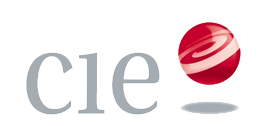Temporary COVID-19 Unit
The Carlos Slim Foundation, with the support and commitment of various Foundations and private sector Companies, enabled the construction of the Temporary COVID-19 Unit in the Citibanamex Center in Mexico City, to help diminish the saturation of hospitals in the National Health Institutes, Highly Specialized Hospitals and the network of hospitals of the Ministry of Health of Mexico City and Metropolitan Area with patients having this illness.
The Temporary COVID-19 Unit was delivered to the Government of Mexico City to be operated by the Ministry of Health of CDMX on April 22, 2020. Due to the evolution of the pandemic and the successful service model, the operation of the UTC-19 was extended throughout the year.
In January 2021, given the upswing of the pandemic, the Carlos Slim Foundation and the Government of Mexico City decided to maintain the operation of the Temporary COVID-19 Unit as long as necessary. Therefore, it extended its capacity:
| ⦁ Initial Capacity | Current Capacity |
|---|---|
| ⦁ Initial therapy beds: | 234 to 455 |
| ⦁ High flow nasal prong beds: | 0 to 80 |
| ⦁ Intensive therapy beds: | 12 to 54 |
| ⦁ Post intensive therapy beds: | 0 to 18 |
| Total: | 246 to 607 |
5,777 patients cared for with 97% favorable outcome
INFRASTRUCTURE AND TECHNOLOGY
Dimensions: 35 thousand square meters of area
The Unit is equipped with technology and inputs that guarantee quality and timely care with standards of safety and protection of the patients and health personnel.
⦁ Reconversion of Room “D” in Intensive Therapy Room, with an increase of 22 beds reaching a total of 54.
⦁ Tomograph of 16 cuts that will help the precision in the diagnosis.
⦁ Equipping of monitors and ventilators for post intensive therapy.
⦁ 35 thousand gallons of available oxygen.
⦁ 120 beds for doctor rest and showers.

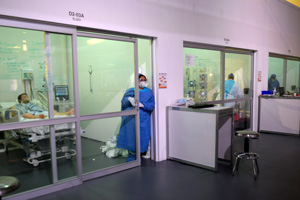
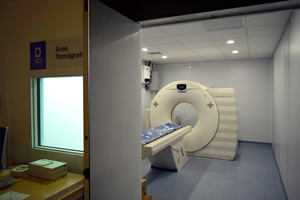
One of the latest technological innovations that has been incorporated is robots that fulfill three basic functions:
⦁ They permit an oversight of all the intensive therapy patients, remotely reviewing their parameters and vital signs, emitting warning signals.
⦁ This also permits a concurrent consultation between doctors who are inside and outside the therapy, using a videoconference type technology so that different specialists review a single patient without being there physically. The robot has autonomy to be directed to the patient, without someone having to operate it.
⦁ It has the capacity to review radiographic images through the screen, facilitating recommendations when one or more specialists are reviewing the images.
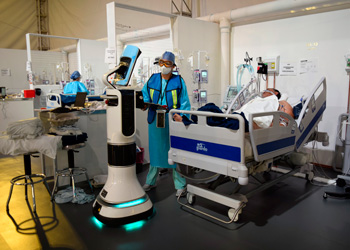
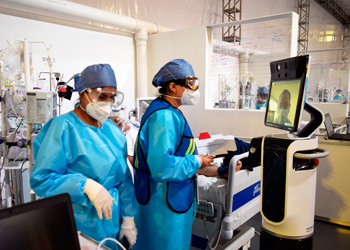
The Temporary Unit operates under the COVID 360 Platform with the following elements:
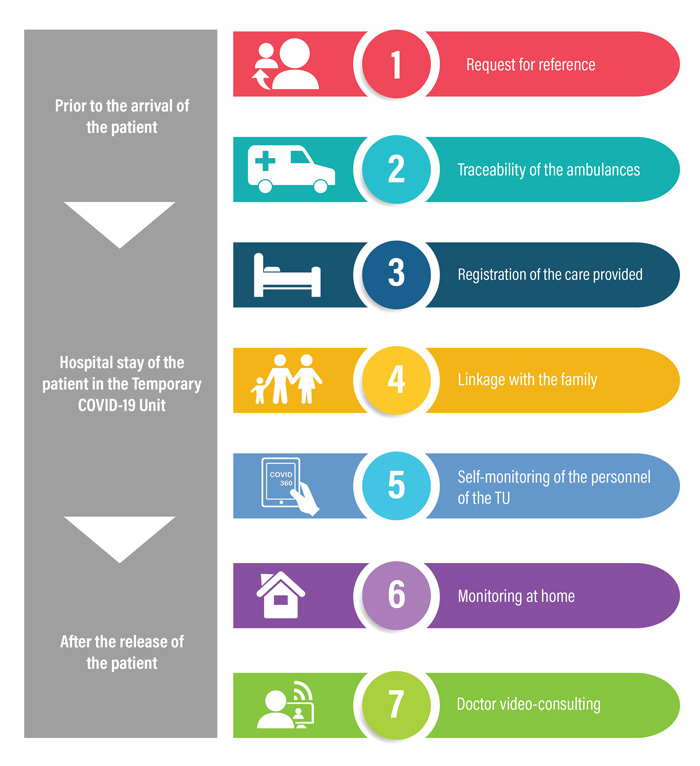
Protection
The Unit has high protection systems for the staff and its patients:
⦁ Personal Protection Equipment
⦁ High efficiency N95 respirators
⦁ Protocols and equipment to avoid dissemination of aerosols
⦁ Air conditioning with laminar flow
⦁ Ultraviolet light lamps for sanitation
⦁ Clinical Nutrition Services
Hospital Reference
A strategy has been implemented of early care and hospitalization, which has been implemented through 48 Triage centers where more than 33,400 people have been evaluated.
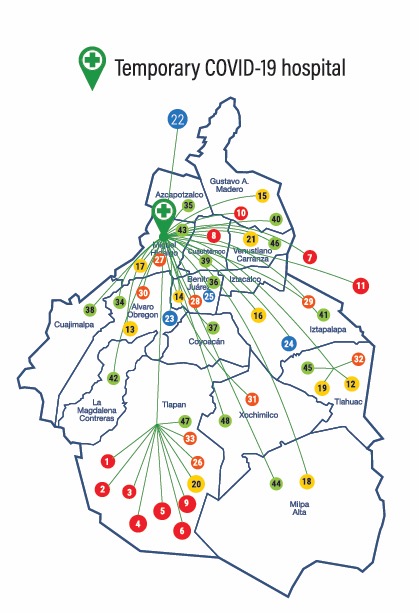
25 hospitals
25 Jurisdictions
8 UTC Triages
Patient centered care
⦁ Coordination with the original hospital for the continuity of their medical treatments and immediate counter-reference when necessary.
⦁ Guarantee of permanent Oxygen Therapy for all patients.
⦁ Strict protocol for prevention of infections and adequate use of personal protection equipment.
⦁ Quality comprehensive clinical care.
⦁ Personalized clinical care for vulnerable patients due to comorbidities.
⦁ Permanent information and communication with the families.
⦁ Assisted remote follow up with digital platform at home upon release of the patients.
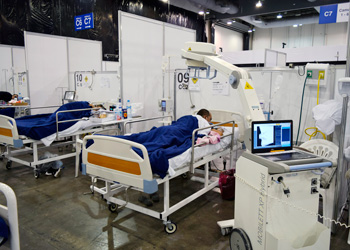
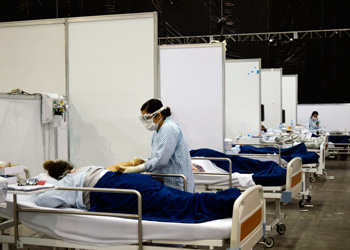
We thank the support of the UNAM, through the School of Medicine, as well as the National Institutes of Medical Sciences and Nutrition Salvador Zubirán and of Respiratory Illnesses (INER).

Initiative of:
